Thirty years ago, Canadian author and activist Margaret Atwood wrote a salient allegory entitled The Handmaid’s Tale. The dystopian novel sparked the creation of a film in 1990, an opera in 2000, and this year, a TV series on Hulu, which has since exposed many of the story’s deeper underlying messages. Even more recently, last month, for the opening of the new Public Hotel at 215 Chrystie Street in New York, an exhibition cropped up upstairs, focused on the tale. Organized by Mangue Banzima, and in partnership with Vogue and Hulu, the exhibition featured the costumes from The Handmaid’s Tale, created by costume designer Ane Crabtree.
“Ane is a visionary,” said Banzima. “I admire her attention to detail and her understanding of trends, garment structure, and fabrication, as well as the figure. Her choice of fabrics and colors added so much value to the characters themselves.”
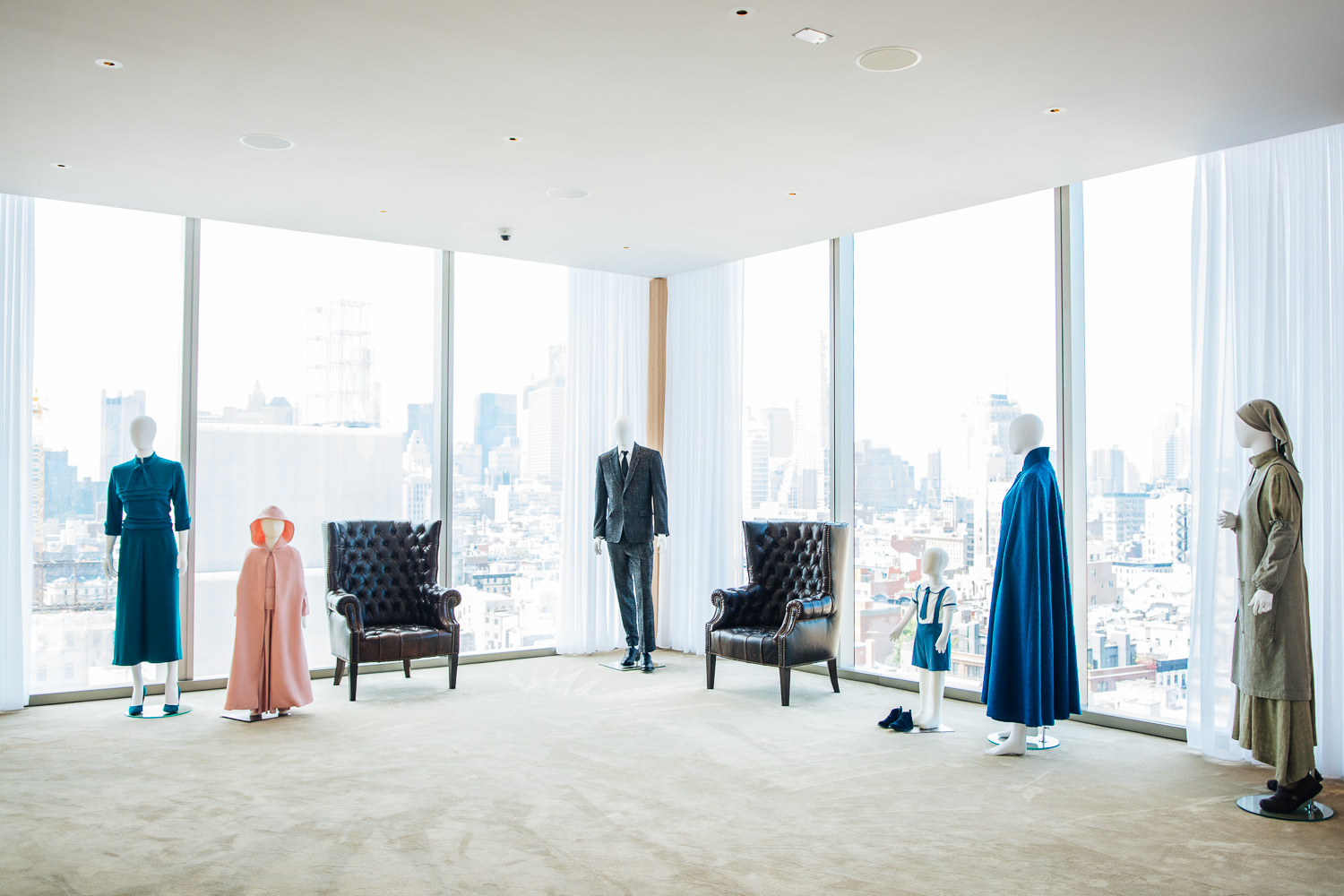
Costumes from The Handmaid’s Tale by costume designer Ane Crabtree at Public Hotel.
Organized by Mangue Banzima, in collaboration with Vogue and Hulu.
Photo by Mollie Vogt-Welch.
Courtesy of Ane Crabtree and Mangue Banzima.
Those garments on view, rather than creating a dramatic scenario for thrill, explored a modern skewed world—Gilead. Various color tones separated different groups: red designated Handmaids; teal was reserved for the Commander’s Wives; black was for the Commander and their henchmen; navy denoted the Guardians; grey showed Economen and their Econowives; friar brown dressed the Aunts; and moth green gave way to the Marthas. Each costume boasted unique parts, such as waist covering corsets—known as obis—for the Handmaids, vagina “collars” for the Aunts, and strong shoulders for the Commanders.
“I looked to classicism in design from the 1900s through today, for touches, small moments of design, within the purity of simplicity,” said Crabtree. “There are so many hidden details that do as a secret gift to those viewers who find them onscreen; small gifts within the costumes that are for the actors, to help inspire them with movement, and/or the psychology of the scene. One of the visual mirrors, that is hopefully evident to the viewer, is the idea that the small children, the young girls, and Hannah, Offer’s daughter, are mirrors of the adults. That sort of uniform for the masses that is infused, even in the children, is something that terrifies me, as it is through children that we inject our most positive and most dark human nature.”
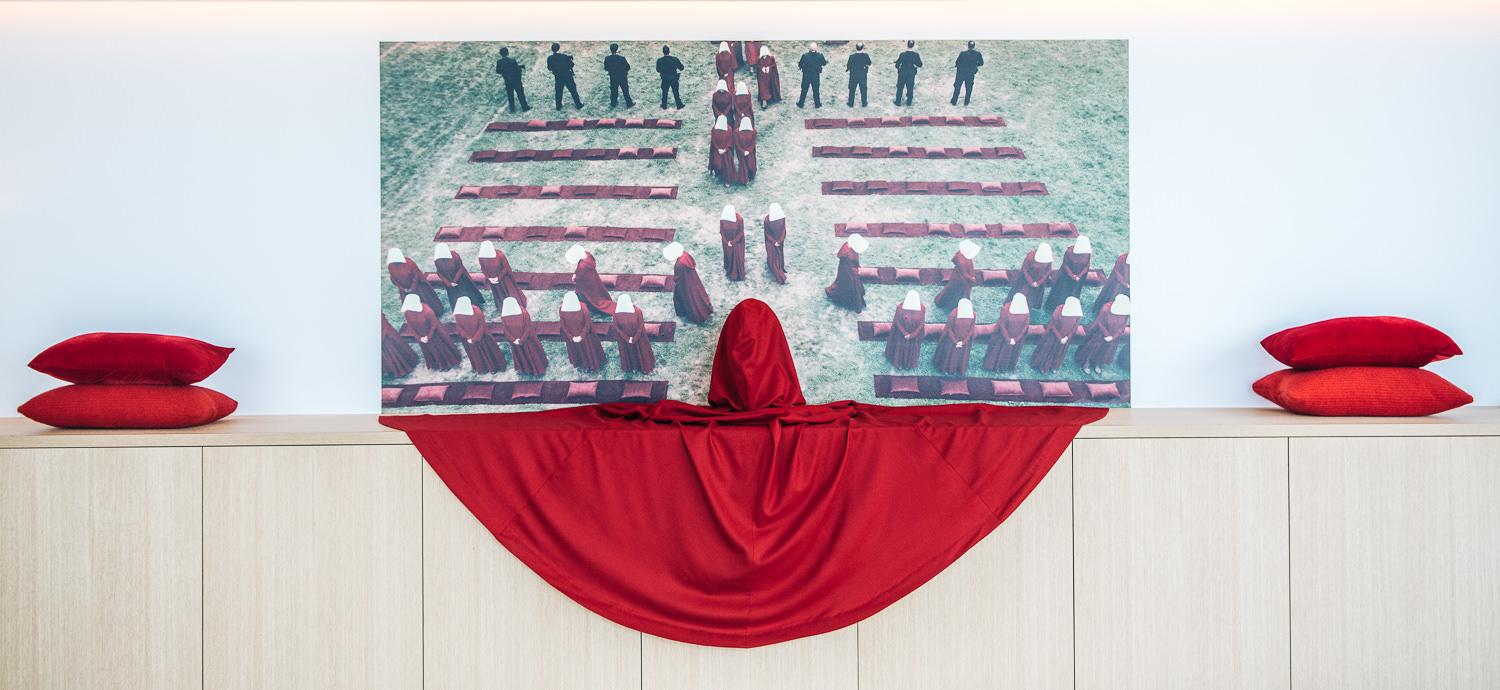
Costumes from The Handmaid’s Tale by costume designer Ane Crabtree at Public Hotel.
Organized by Mangue Banzima, in collaboration with Vogue and Hulu.
Photo by Mollie Vogt-Welch.
Courtesy of Ane Crabtree and Mangue Banzima.
To learn more, we spoke to both Banzima and Crabtree.
Whitewall: Ane, how did you originally end up in the position of creating the costumes for The Handmaid’s Tale on Hulu?
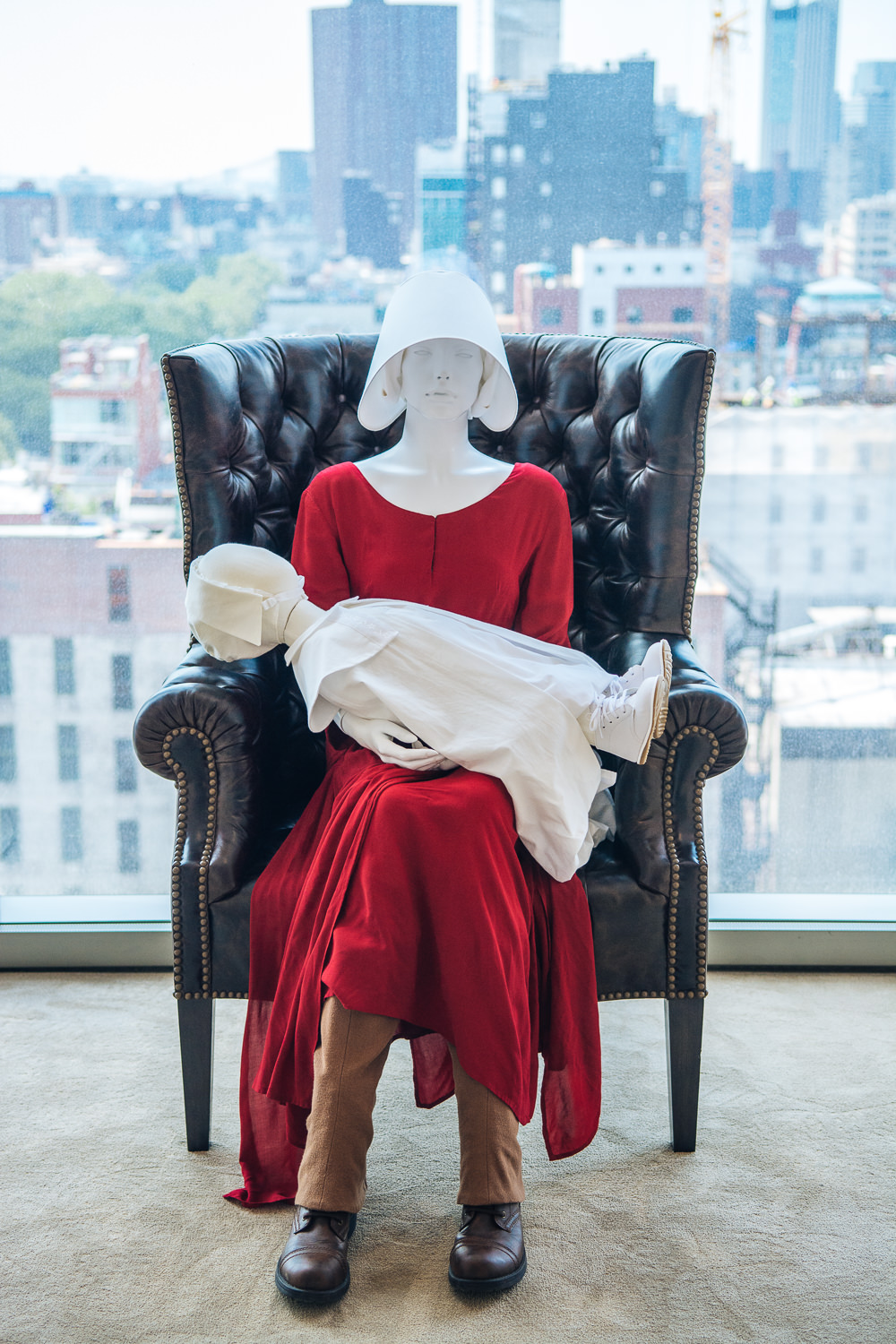
Costumes from The Handmaid’s Tale by costume designer Ane Crabtree at Public Hotel.
Organized by Mangue Banzima, in collaboration with Vogue and Hulu.
Photo by Mollie Vogt-Welch.
Courtesy of Ane Crabtree and Mangue Banzima.
Ane Crabtree: I was called by Warren Littlefield and Bruce Miller, who had seen Masters of Sex and liked my work. We met for over two hours for the interview, and throughout that conversation, I realized that they both had a beautiful new take on a classic novel. We all wanted to approach the story in a very modern way, looking at the present-day world as a kind of looking glass.
WW: Tell us a bit about the process behind creating the looks on the show.
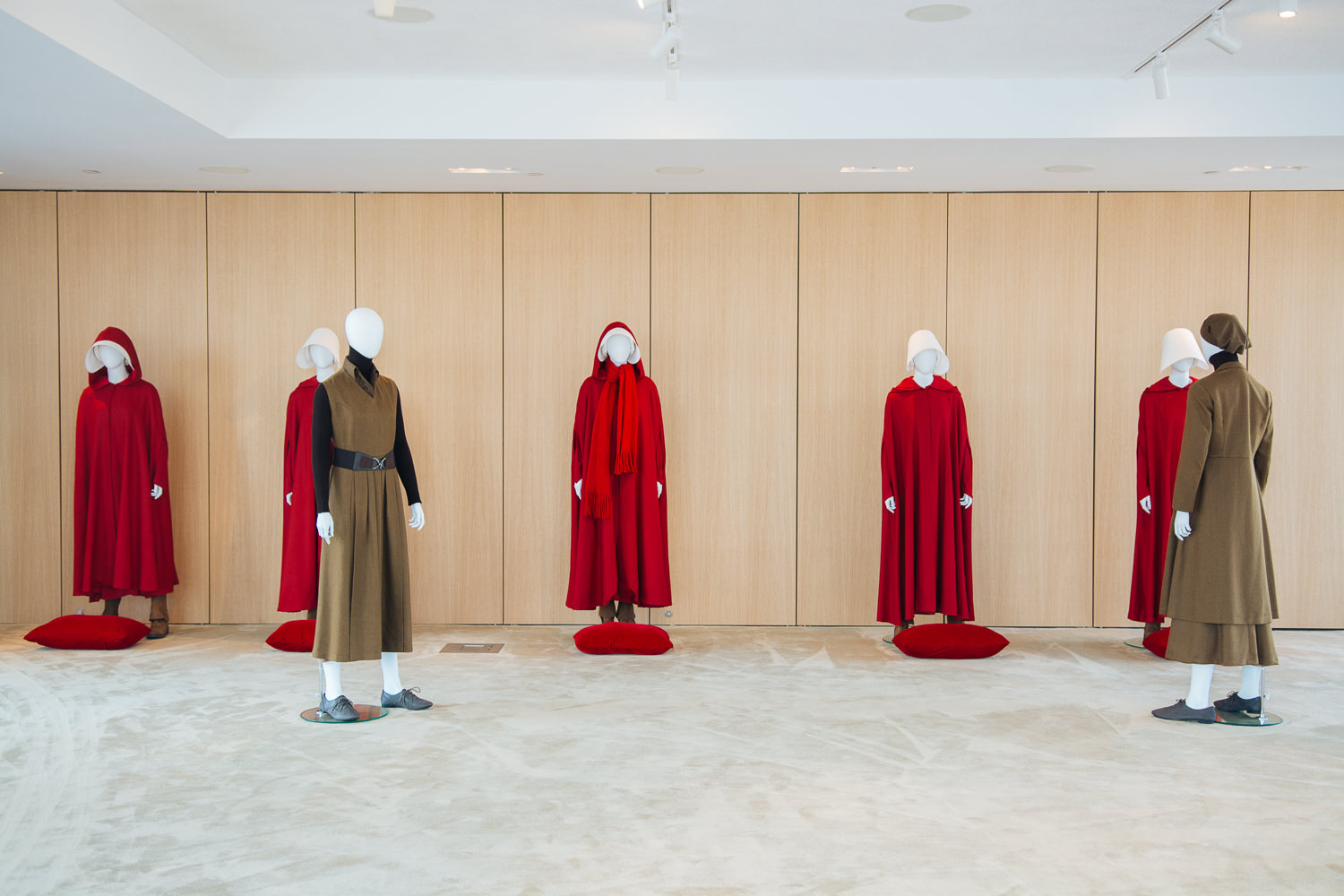
Costumes from The Handmaid’s Tale by costume designer Ane Crabtree at Public Hotel.
Organized by Mangue Banzima, in collaboration with Vogue and Hulu.
Photo by Mollie Vogt-Welch.
Courtesy of Ane Crabtree and Mangue Banzima.
AC: Having been a huge fan of the book and the original film, I didn’t want to disrespect either by going down the wrong road. Of course, the only way as an artist to approach material that you know, and want to infuse a new view into it, is to metaphorically throw away the material (after, of course, checking in with it), and then starting anew with a blank canvas.
The zen way was for me to utilize the current state of affairs in America (Amerika) within the political realm. Beyond this, my process was to integrate imagery from all over: modern day cults and religious societies where woman have had their power taken away, at least visually, through clothing, clothing from times of war, and the military uniforms that are aligned with that, religious garb of priests and hierophants, societies wherein a whole people dresses alike and is controlled by that uniformity.
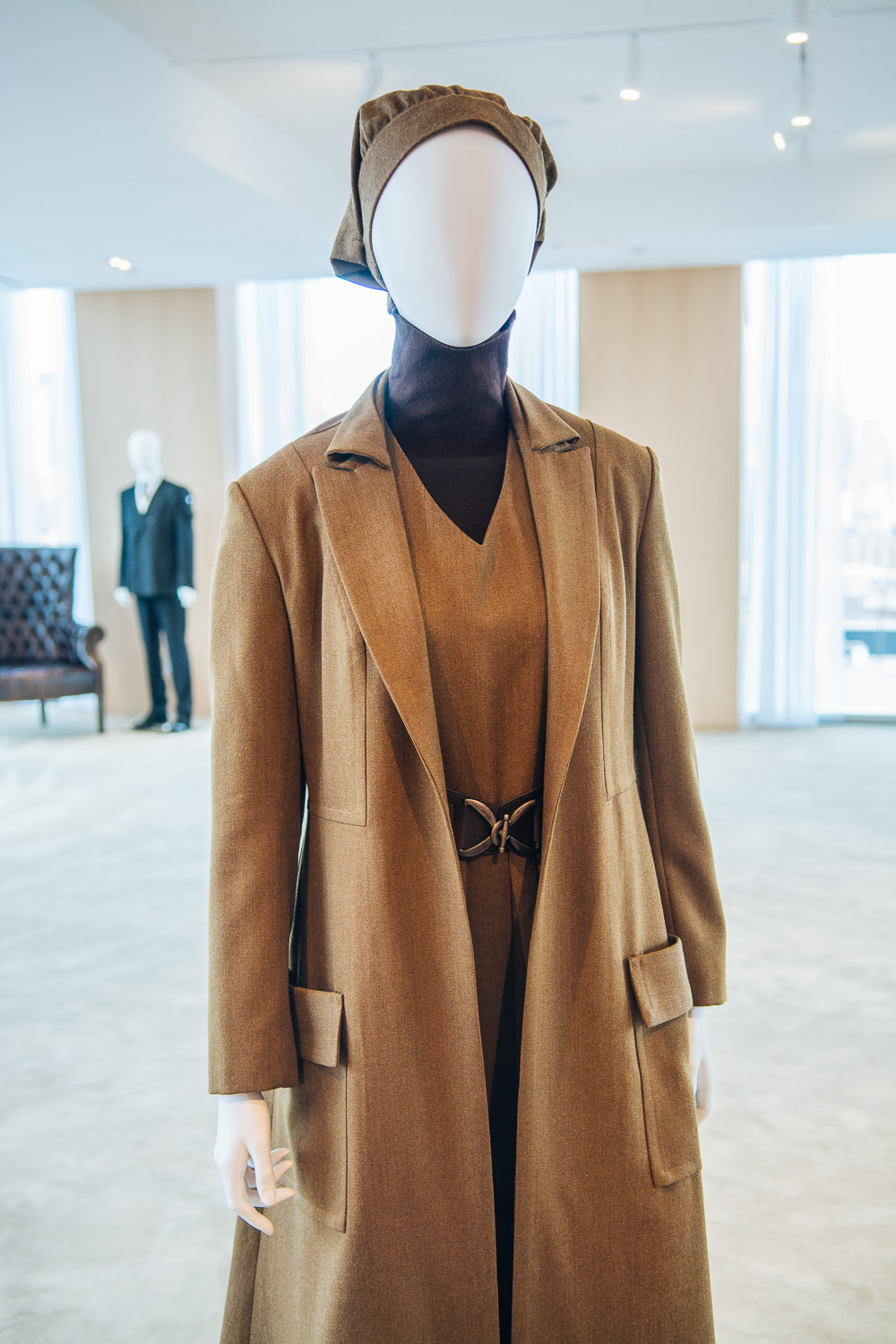
Costumes from The Handmaid’s Tale by costume designer Ane Crabtree at Public Hotel.
Organized by Mangue Banzima, in collaboration with Vogue and Hulu.
Photo by Mollie Vogt-Welch.
Courtesy of Ane Crabtree and Mangue Banzima.
I was at first repulsed by, then inspired by, the confines of those seemingly constricting elements of clothing, and how it regulates a society, and the political and psychological sub-meanings throughout. Nothing is a literal inspiration, just snippets of visual memories that have inspired me forever, that apply to the subject matter, in a way that I have felt my own rights as a woman, a multi-racial human being, with an immigrant for a mother, and an indigenous Okinawan, have been taken away.
WW: This show deals with a number of great issues, which were very much present in the past, and are large concerns today, too. What is most important to convey in this show with these costumes?
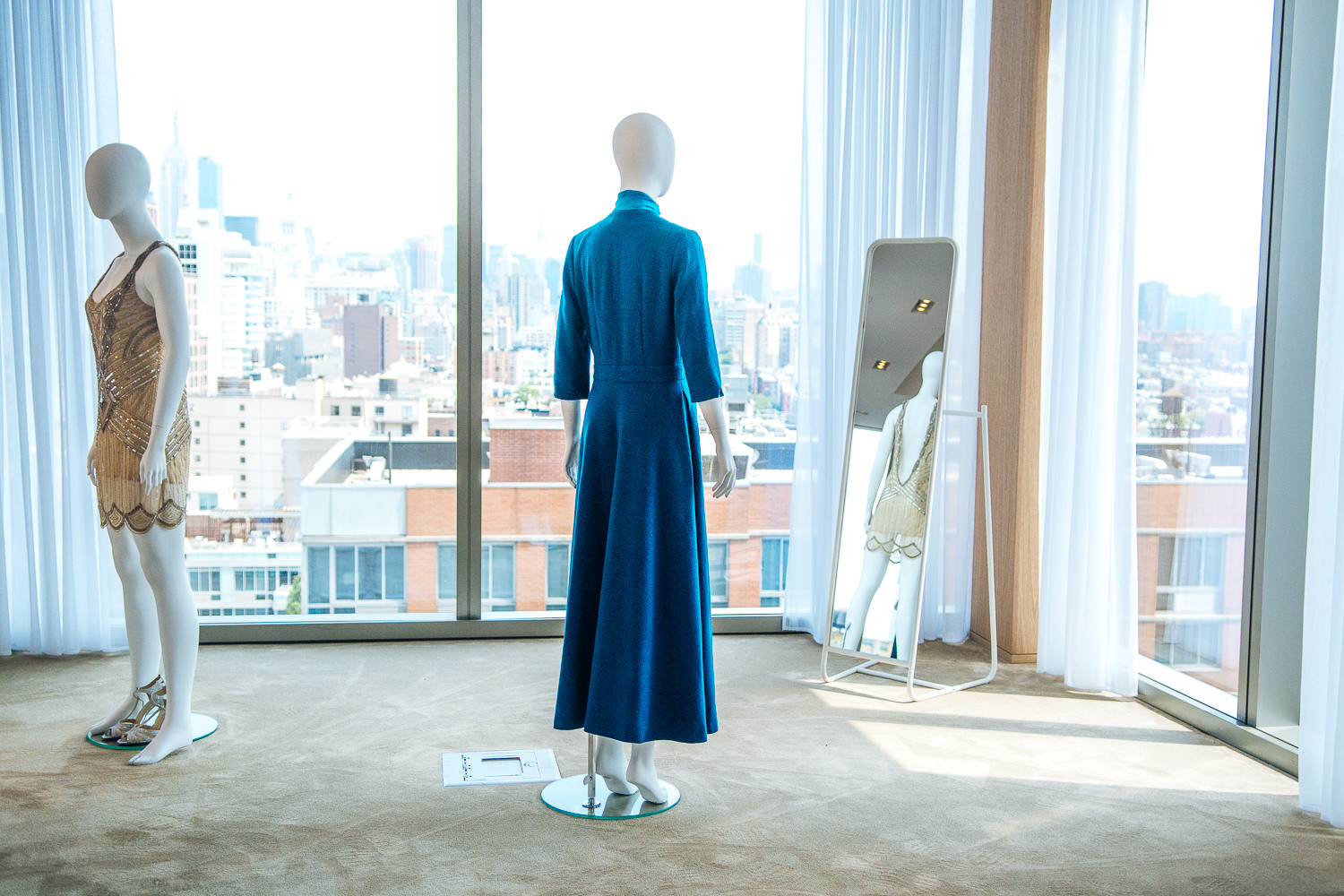
Costumes from The Handmaid’s Tale by costume designer Ane Crabtree at Public Hotel.
Organized by Mangue Banzima, in collaboration with Vogue and Hulu.
Photo by Mollie Vogt-Welch.
Courtesy of Ane Crabtree and Mangue Banzima.
AC: There are so many, but the largest that I can think of is that the subjugation of women, via the controlling of their bodies, and therefore via the costumes, is a dark past, present, and future that one cannot deny. I think that this is the reason so many are utilizing The Handmaid’s Tale’s costume as a political metaphor. It resonates throughout time, because the same issues regarding women’s rights apply today. This is my proudest, and yet most deeply saddening off-kilter triumph, of this show.
Whitewall: Mangue, why was this an important exhibition for you to put together?
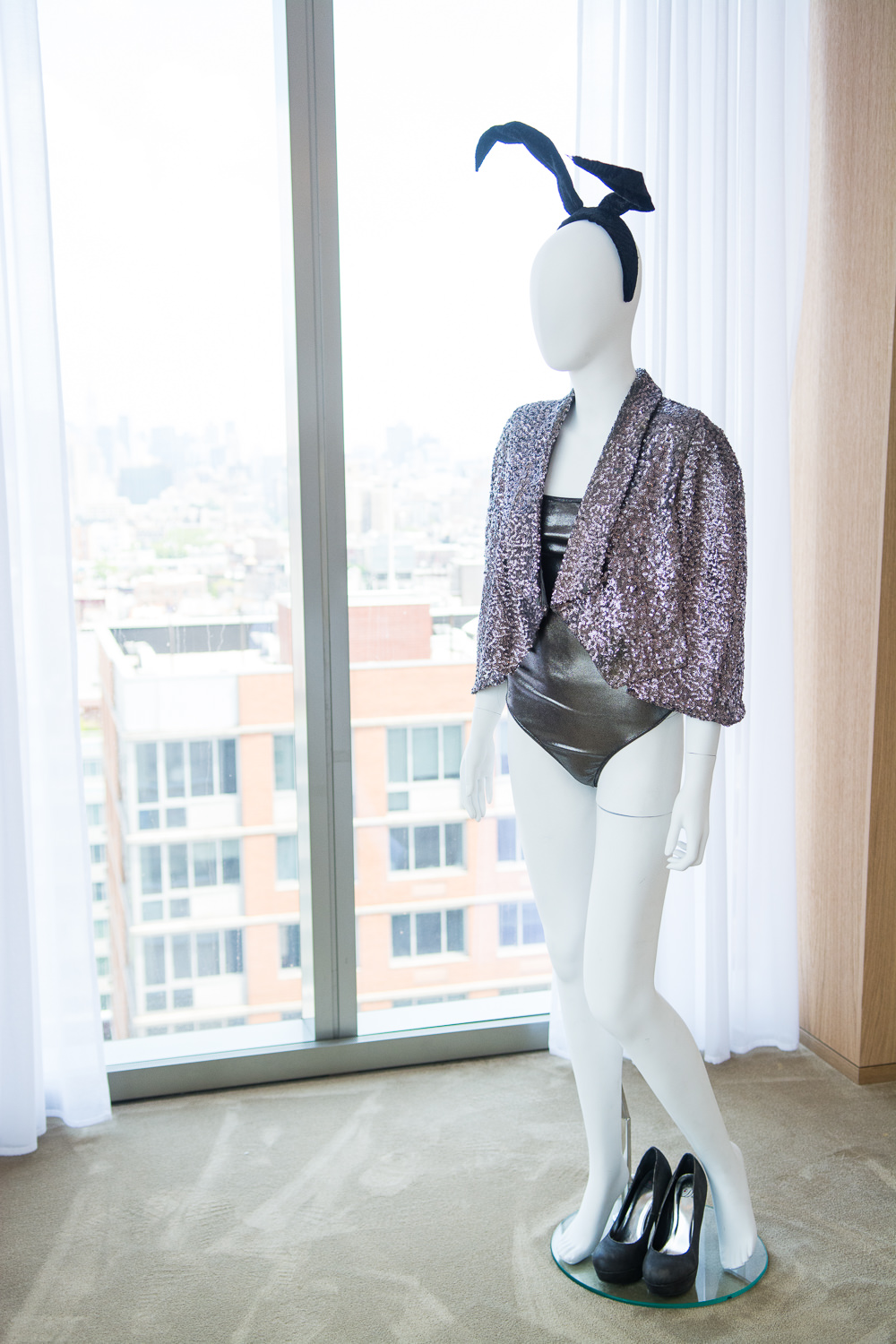
Costumes from The Handmaid’s Tale by costume designer Ane Crabtree at Public Hotel.
Organized by Mangue Banzima, in collaboration with Vogue and Hulu.
Photo by Mollie Vogt-Welch.
Courtesy of Ane Crabtree and Mangue Banzima.
Mangue Banzima: The Handmaids Tale is such a relevant story today and it really touches on the social and political aspects which we as people have and are contending with still today. It’s about history, justice, gender and power and empowerment. It was my job to work with the costumes and try to highlight many of these elements.
After watching the series and reading about it, I drew inspiration from the characters’ personalities (both their good and evil qualities) and the plot, as well as my prior exhibition experience working with fashion and costume—thinking through color theory, interior, and spatial relationships, as well as the gestures and poses of the mannequins.
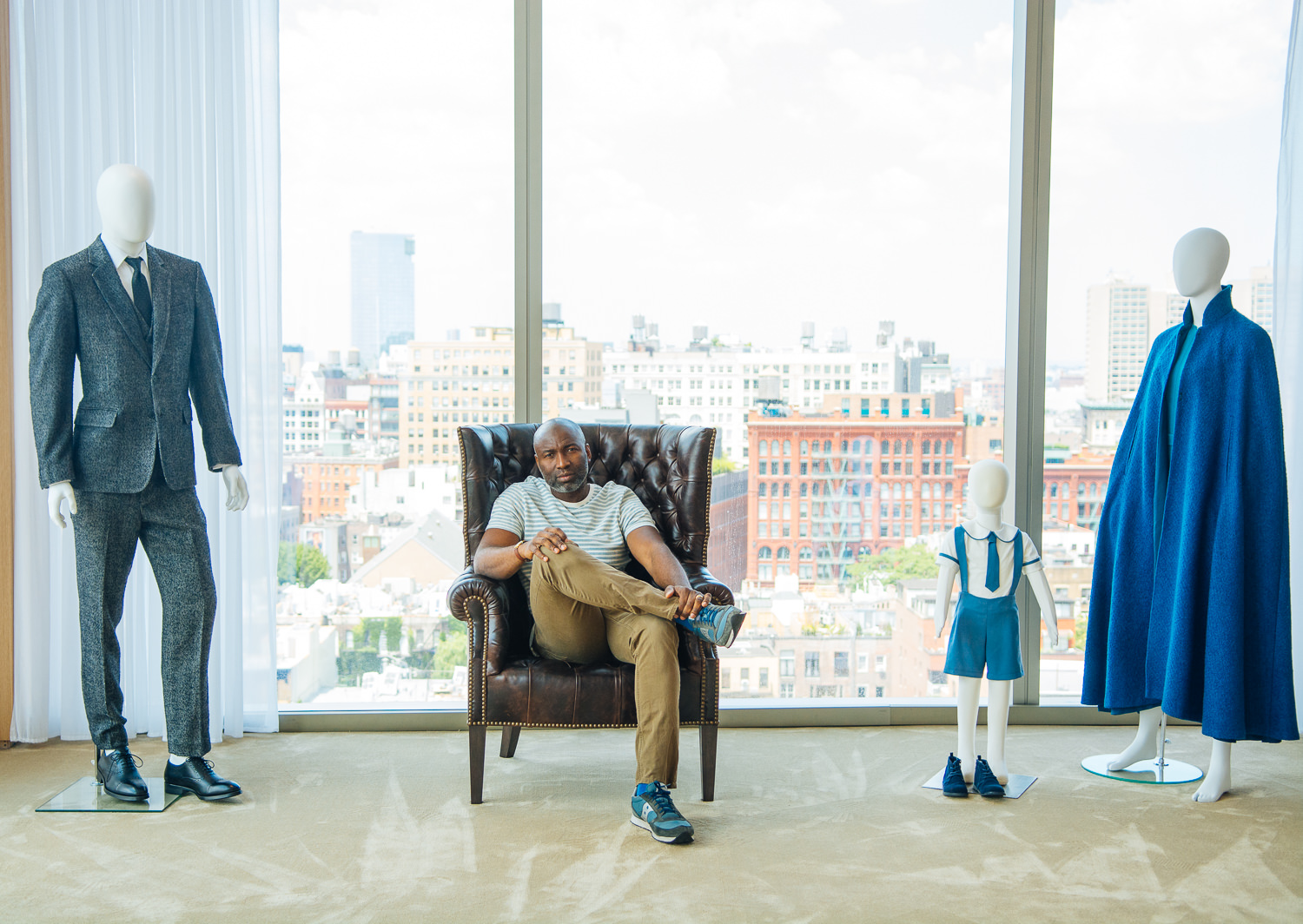
Creative director Mangue Banzima.
Costumes from The Handmaid’s Tale by costume designer Ane Crabtree at Public Hotel.
Organized by Mangue Banzima, in collaboration with Vogue and Hulu.
Photo by Mollie Vogt-Welch.
Courtesy of Ane Crabtree and Mangue Banzima.
WW: Why did you decide to stage the exhibition the way that you did?
MB: Just like with any art or fashion exhibition, I wanted to let the works, the costumes, speak for themselves, while at the same time highlight certain motifs from the actual series—elements that people would remember and be able to connect back to the story. For example, I included the iconic red velvet pillows through the exhibition, associating them specifically with the Handmaids as they were done within the film itself. I also wanted to highlight the power relationships and certain tensions among the characters by juxtaposing the Gileads with the Captains’ wives, and the Handmaids with their overpowering head mistress.









